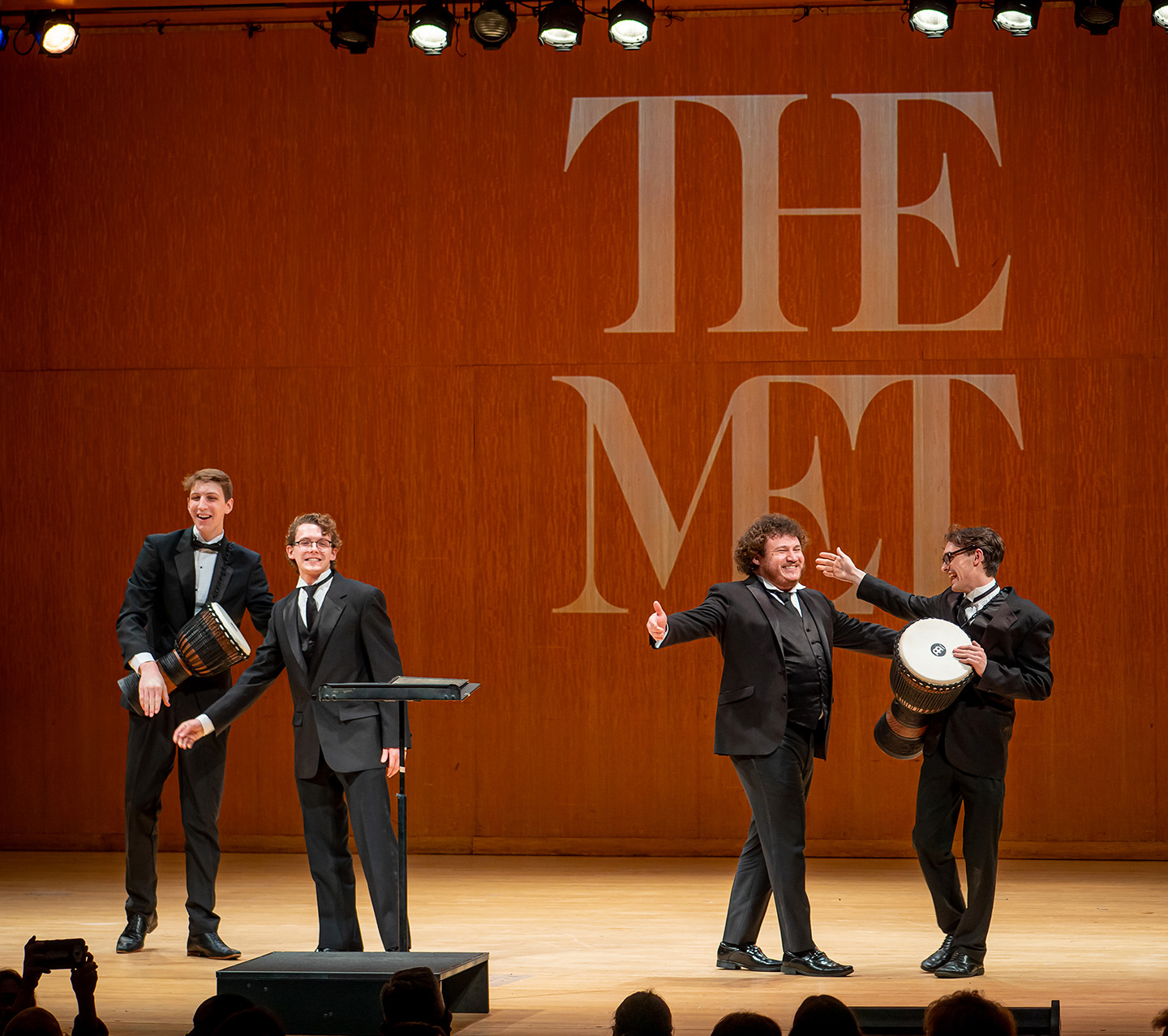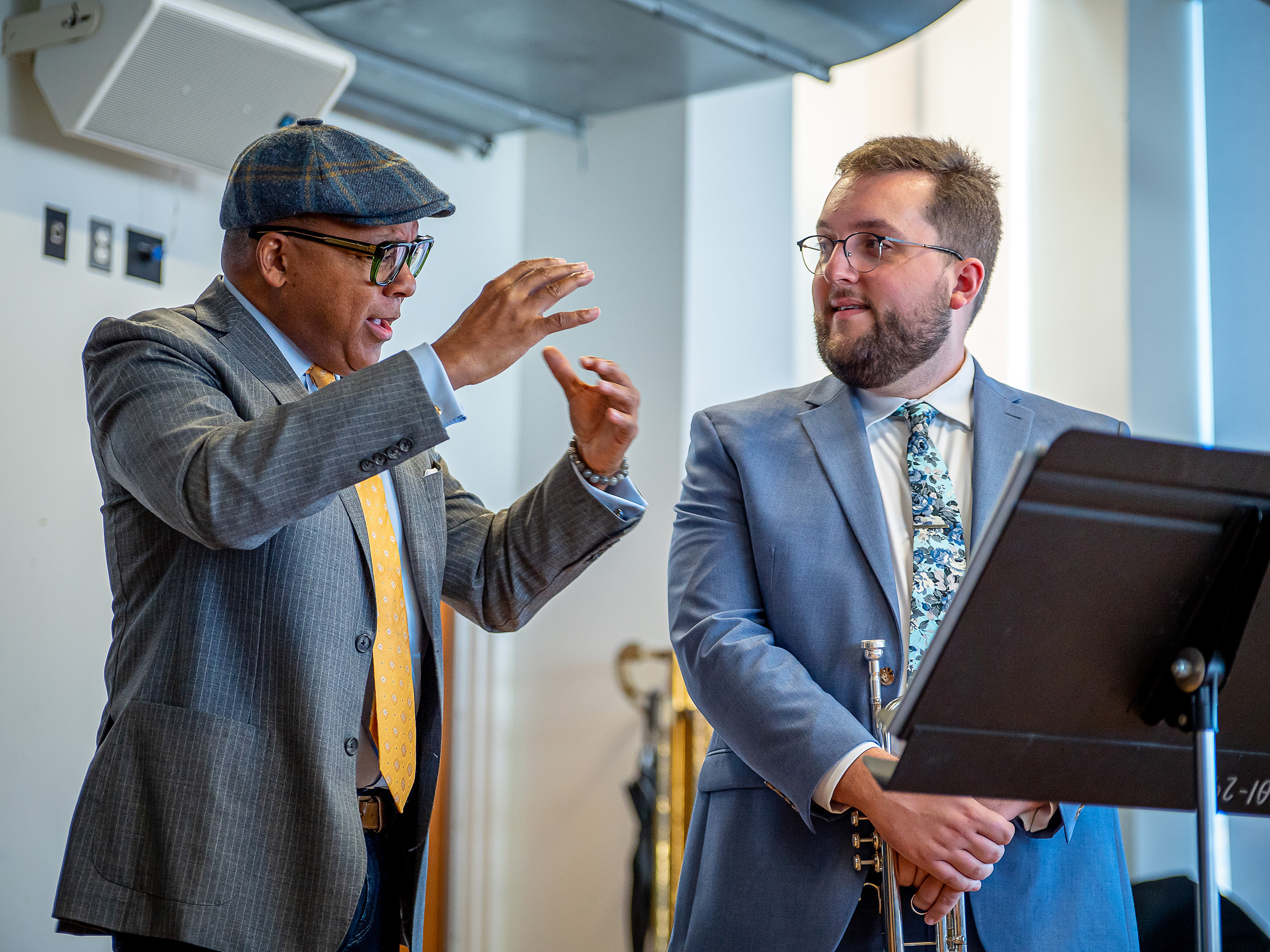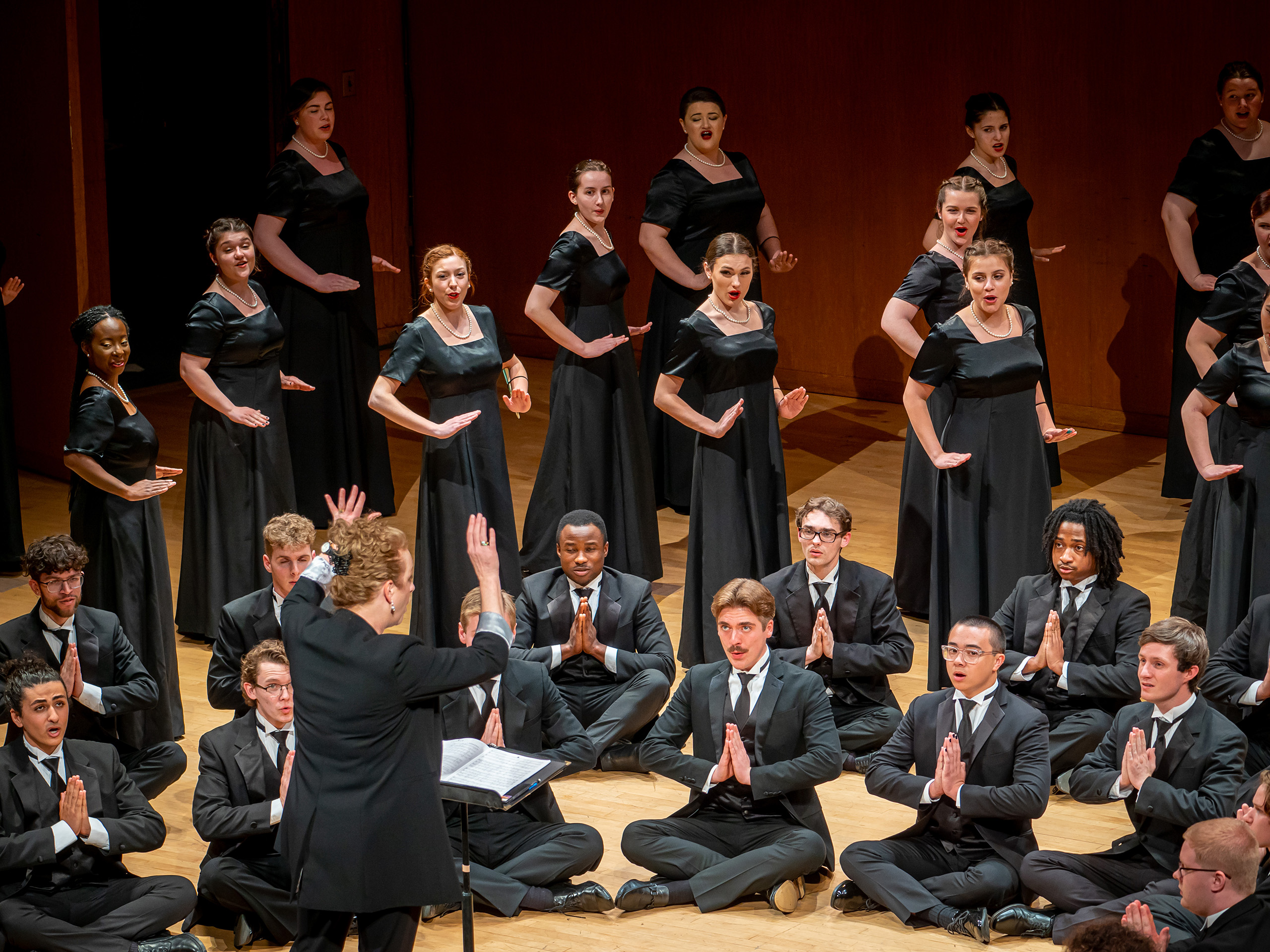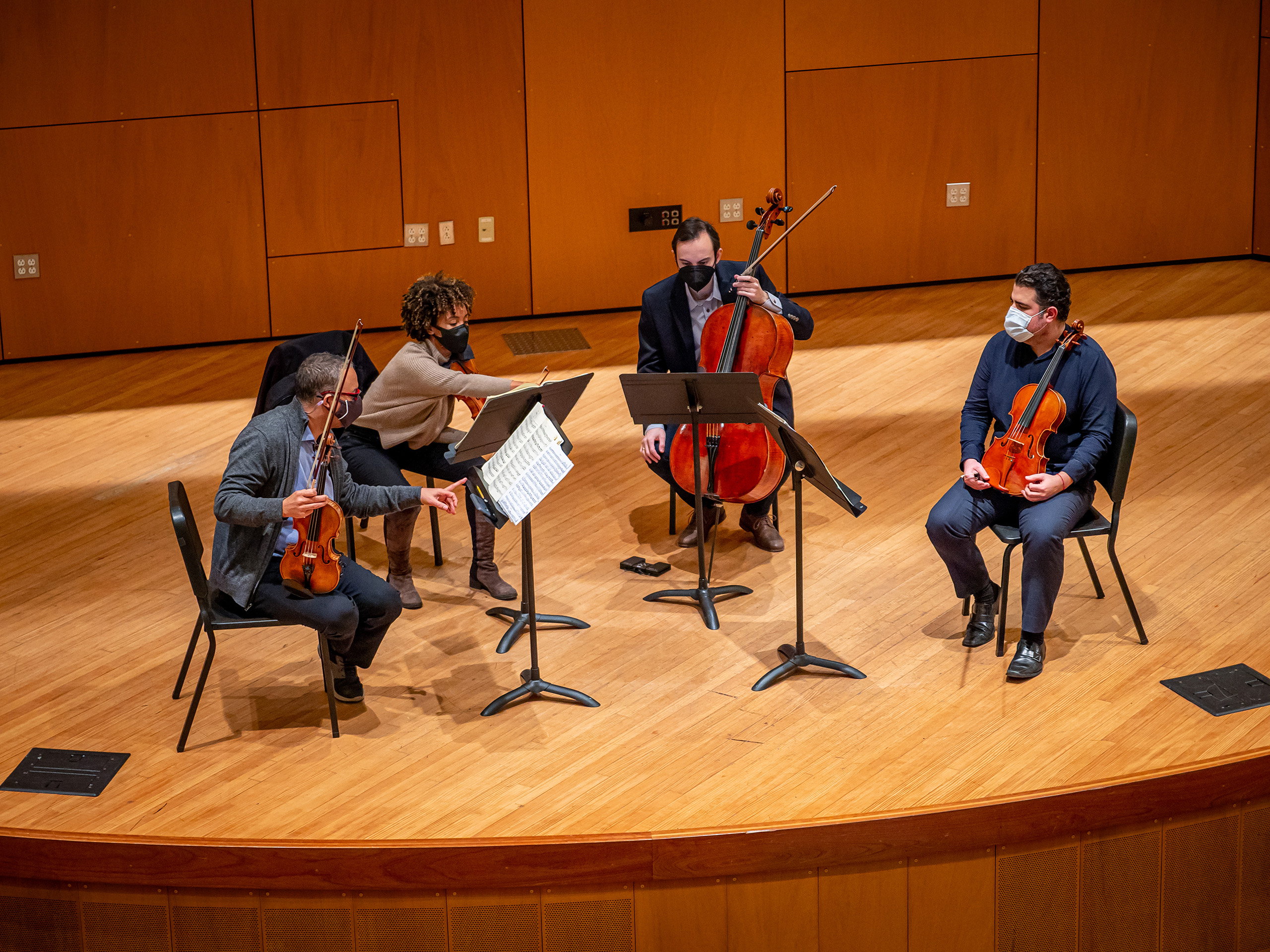
We’re Back!
In return to live performances, Cali hits a high note at The Met and with artists-in-residence
It would have been understandable if Gavin Ard ’22 was nervous the day he played for legendary trumpeter and composer Wynton Marsalis. “Oh man, it’s the guy,” he recalls thinking during a master class taught by Marsalis. But he kept his cool, attuned to the way Marsalis was connecting with everyone around him.
“I immediately got the vibe that his focus was more about being with people through music than being with musicians. He was focused on the humanity aspect of everything,” says Ard, who graduated in May with a degree in Music Performance. “He’d put his hand on your shoulder and say, ‘You just played, we’ll talk about it, but let’s remind ourselves we’re not just trumpet players, we’re people.’ It was a big thing with Wynton. I played a classical piece and all of his comments were based on things not on the page.”

The opportunities to learn from masters like Marsalis hit a high note for Ard and other students at the John J. Cali School of Music this year, where ensembles and solo artists rotated through a series of professional residencies after the pandemic’s pause.
Live performances were back, including one extraordinary night at the museum. “There was something different about this performance,” says Nick Scafuto, a lead tenor with the University Singers, recalling the March concert with the Wind Symphony and Jazz Ensemble at The Metropolitan Museum of Art in New York City.

“You’d have to be trying very hard to not feel the electricity in the room. Every single artist on stage was in top form and playing and singing their hearts out,” says Scafuto. “It was the kind of performance that said, ‘Here we are, New York! Where do you want us to play next?’”
In remarks reflecting on the musicians’ return to the world stage, Anthony Mazzocchi, director of the John J. Cali School of Music, thanked the leadership of the museum for collaborating on “a model for how we will move beyond the multiple disruptions the pandemic has leveled on our profession.”
For Lornaa Morales, a classical percussionist in the Music Therapy program, “sharing our art form in a venue full of people who were there to appreciate the arts was one of the most rewarding feelings ever. At the height of the pandemic, we rehearsed in a parking garage in hopes that we might soon return to normalcy, so this experience was an absolute gift.”

Back home on campus, the music was equally thrilling. Visiting musicians crossed boundaries and a variety of genres, from a classical rock-star duo to a vocal band evoking emotional sound palettes to an experimental string quartet. The spring roster included an evening of immersive music with Grammy-winner James Blachly conducting the Experiential Orchestra and Montclair State University Symphony Orchestra.
“We’ve tried to keep the artists diverse in every possible way,” Mazzocchi says. “It’s important that students from all walks of life see a part of themselves up on stage, and at the same time to have students exposed to musicians who play a genre that they never thought of, has opened up a lot of eyes.”

Scafuto had the opportunity to workshop with composer, vocalist, playwright and actress Kamala Sankaram on an a cappella commission, Let My Country Awake, based on the poetry of Bengali poet Rabindranath Tagore. “It’s extremely evocative,” Scafuto said of the piece. “Being able to work with interesting meter changes and tonalities is not something you see in the choral space.”

During her residency, Sankaram showcased a variety of creative events, culminating in a performance at Merkin Concert Hall in New York City. “It’s one of those things where you’ve been seeing these people on YouTube videos with millions of views and in different kinds of spaces and then to actually have them in front of you is wild,” says Scafuto, who graduated in May with a degree in Music Education.
An open rehearsal in early February with the Harlem Quartet, Montclair’s quartet-in-residence, pulled back the curtain on the ensemble’s creative process as they worked through String Quartet in C Major, K. 465, "Dissonance" by Wolfgang Amadeus Mozart. The musicians worked on tempo, “leaving room to breathe” between notes, creating space for their imaginations to come through. “We have a plan, but we change and react in the moment,” Harlem Quartet cellist Felix Umansky explained.

Ard says he takes those lessons on interpretation to heart. “Slowing down, pushing through, dynamics that aren’t on the page, there’s a part of me as a young musician that thinks that’s not what the composer said, when in reality that’s what separates incredible musicians from people who play just what’s on the page.”
“It’s incredible that we get to work with the musicians and evolve with them,” says Ard, who came to study at the Cali School from St. Petersburg, Florida. “It reminds us why we’re artists and why we’re musicians, to see these people who are out there doing what we want to do at the very highest levels.”